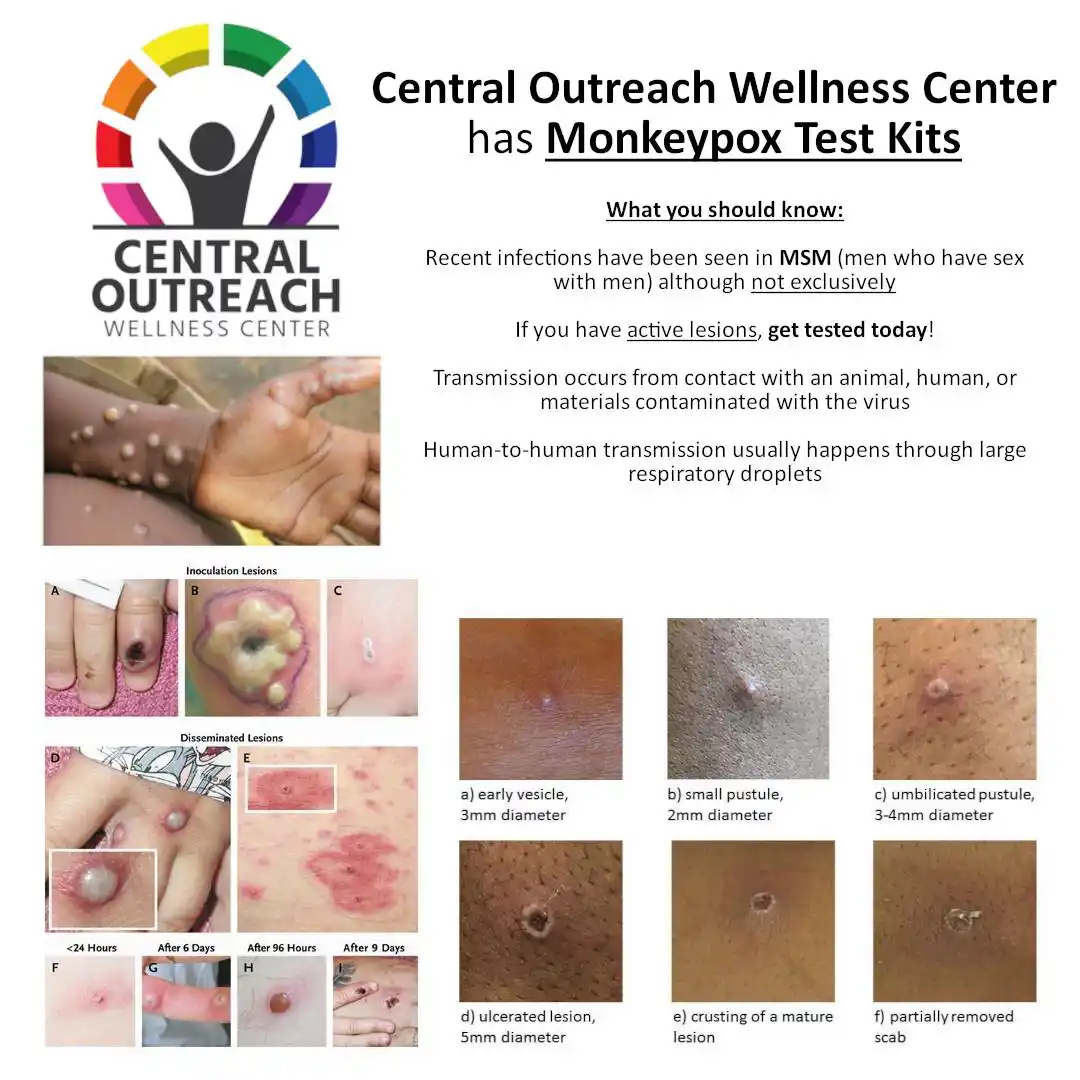Since May 13th, 2022, infections of the monkeypox virus have been reported across 12 World Health Organization (WHO) regions. Clusters of this virus were found, though not exclusively, in groups that identified as MSM (men who have sex with men).
As of May 21st, 2022, there have been 92 confirmed infections and 28 suspected cases of monkeypox, some of which have been confirmed in Pittsburgh. A Pittsburgh resident recently went viral on TikTok for discussing her difficulties in receiving a monkeypox diagnosis -- until she visited our team at Central Outreach Wellness Center.
In light of these developments, the team at Central Outreach Wellness Center wants our patients to be informed about the risks, effects, and prevention of monkeypox in order to mitigate its spread, as well as the steps they can take to get tested.
Here are some basic facts about how the virus was discovered:
Infection with monkeypox occurs:
Keep reading to learn more about the monkeypox virus, monkeypox signs and symptoms, risk factors for monkeypox, preventative measures, and what to do if you think you may have been infected. If you have questions, don’t hesitate to reach out to us.
If you have active lesions, contact us today and get tested!
855-5-WE-CARE
Monkeypox appears similarly to ordinary discrete smallpox – it’s characterized by lesions that progress over time into pustules and then scabs. However, monkeypox will also feature swelling in the lymph nodes.
The incubation period of monkeypox can last 7-14 days, during which a patient is not contagious and may feel fine. Following this period, the progression of the virus is as follows:
Once lesions appear, they may progress as follows:
When properly administered before exposure, existing smallpox vaccines are effective at protecting people against monkeypox. There are three currently licensed vaccines in the United States to prevent smallpox, which will be released by the CDC as needed for confirmed cases or exposure:
While not much data is available on alternate treatment options for monkeypox in humans, several options are being researched for potential use:
The WHO guidelines state that monkeypox may be suspected in a person of any age presenting in a monkeypox non-endemic country with an unexplained acute rash who is also displaying one or more of the following signs or symptoms, since 15 March 2022:
Additionally, the clinical picture must not be explained by the following common causes of acute rash:
The CDC has created a Monkeypox Exposure Questionnaire in response to the 2022 Monkeypox outbreak to assist in assessing patient exposures prior to illness onset. It contains seven sections, four of which can be adapted to fit specific situational needs.
View the questionnaire here(opens in a new tab), and if you do qualify for suspected exposure, reach out to your provider at Central Outreach as soon as possible for the next steps.
WHO:
CDC: